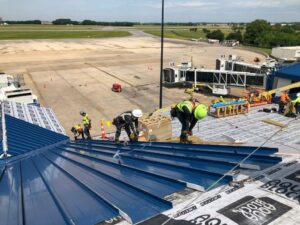City of Bowling Green Sees Continued Growth Through Annexations
Bowling Green is gearing up for more development as the city continues its efforts to expand its boundaries. City officials are working hard on annexations of land throughout Warren County. This initiative is primarily led by Brent Childers, the director of Neighborhood and Community Services. One of the key areas of focus has been the Lovers Lane corridor, which has seen multiple annexations recently, including the addition of 3.041 acres owned by locals Kevin and Lynn Kirby. This recent annexation received final approval from the Bowling Green City Commission, marking another step forward in the city’s expansion plans.
Successful Annexation Strategies
“We have brought several properties in that area into the city limits over the past few years,” said Childers. “Only a few properties are still outside of the city limits.” The annexed property is part of a broader strategy to grow the city’s footprint, making it eligible for the Economic Development Annexation Incentive Policy. Established in 2012, this policy aims to stimulate economic development in newly annexed areas.
According to the policies in place, the program is designed for properties where development will likely result in job creation. “The incentive includes a five-year tax rebate and can be delayed for up to ten years to help property owners maximize development efforts,” explained City Manager Jeff Meisel. This strategy has effectively expanded Bowling Green’s area by more than 2,500 acres, increasing it from 38.5 to 42.5 square miles.
Key Development Areas Identified
Several locations have been targeted for annexation under this program, including Lovers Lane, along Glen Lily Road, Veterans Memorial Lane, and areas adjacent to Interstates 65 and 165. One notable development is the 101-acre mixed-use site The Hub, which was annexed back in 2018. The Hub now features a hotel, a bank, a restaurant, and several hundred residential units. This area used to belong to local farmer Dr. Roy Cooksey before it was transformed into a bustling center for business and living.
Collaborative Efforts with Property Owners
Childers emphasized that all annexations in the area have been consensual, meaning property owners have agreed to bring their land into the city limits. “We’re not forcing anyone,” he noted. “We see greater development in the Lovers Lane corridor, and that’s where we’ve had the most success.” With annexation, new areas gain access to critical services provided by the Bowling Green Police and Fire Departments, which often helps lower insurance costs for businesses.
Supporting Local Job Growth
By focusing on job growth areas, Childers pointed out that the city can support the necessary funding for these essential services. Using the Kentucky Transpark as an example, he stated, “We’ve annexed a tremendous amount of property out there, and all those jobs help pay into the occupational fund, which supports services like our new fire station.”
Residential Growth on Hold
While the city is eager to expand economically, Childers mentioned that they are currently avoiding the annexation of residential areas. “Neighborhoods aren’t job creators in the long-term sense,” he explained. The focus remains on areas that promise job creation to drive further economic development.
Bowling Green’s strategic planning and community initiatives continue to set the stage for significant growth. The city’s commitment to fostering business development and enhancing local services showcases a proactive approach to urban planning that may serve as a model for other communities facing similar challenges.







